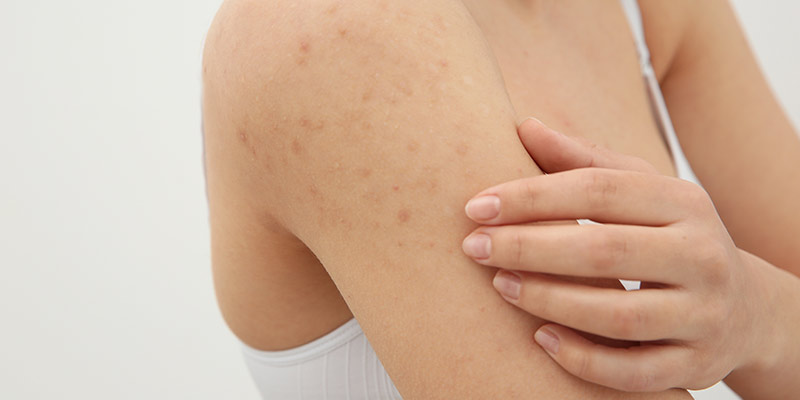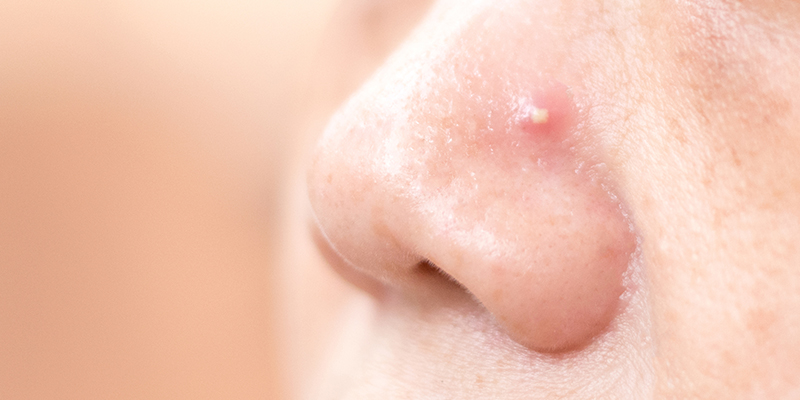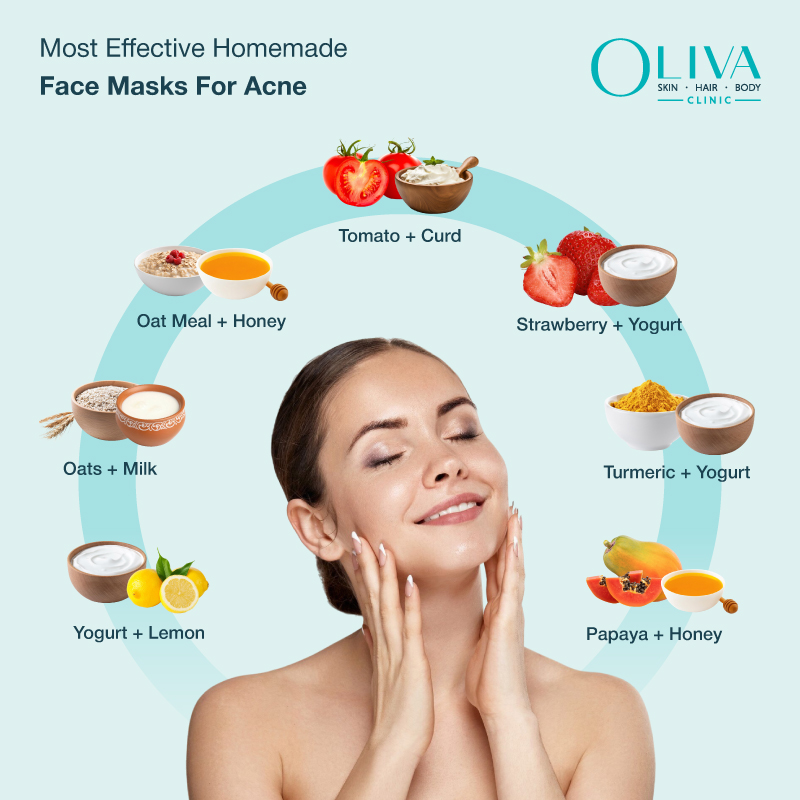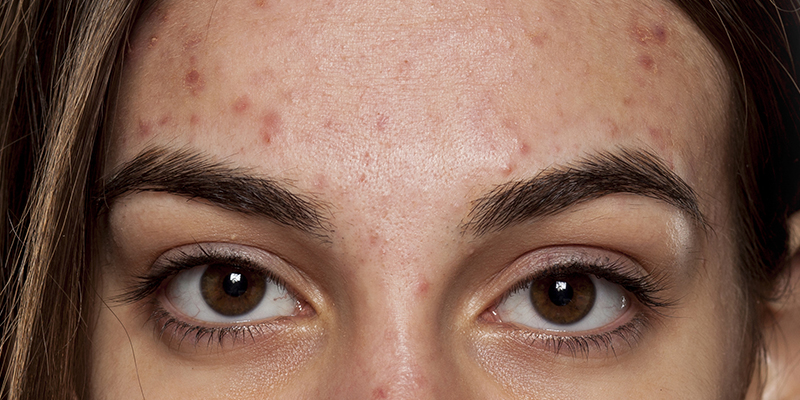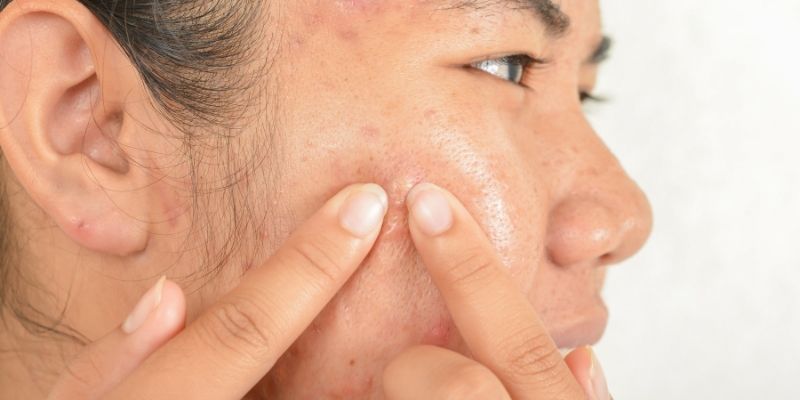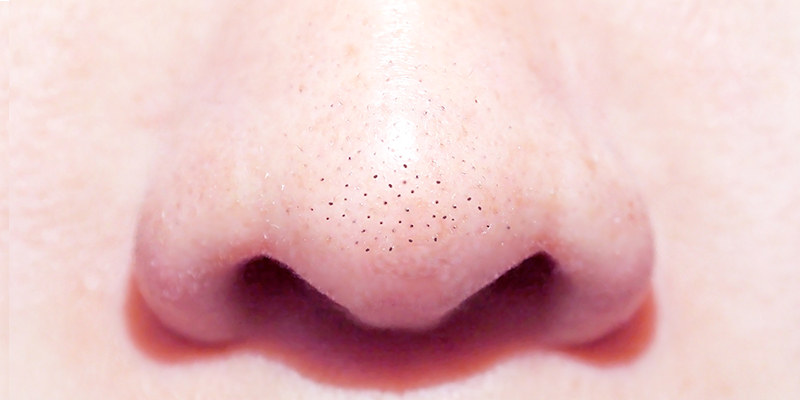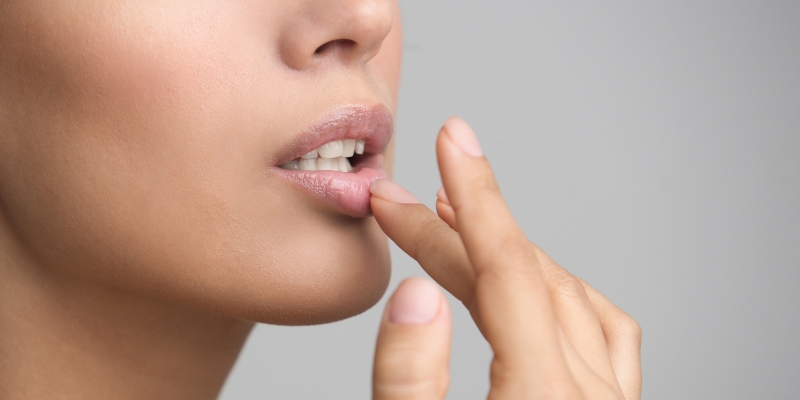Keratosis Pilaris: Causes, Types, Treatments and Tips
Keratosis pilaris is commonly known as ‘chicken skin’ and affects people belonging to all age groups. The term ‘chicken skin’ is used to describe this skin condition because it makes the skin look like that of a featherless chicken. This article will talk about various aspects related to keratosis pilaris and why it is caused. We shall then move on to the treatment options available for it and also a few tips and diet recommendations.
What Is Keratosis Pilaris?
Keratosis pilaris is a genetic skin condition that is common among men, women, and children. It is characterized by the presence of tiny bumps on the skin, which are mostly found on the upper arms, back, cheeks, thighs, and buttocks. It renders the skin with a sandpaper-like appearance and is not a contagious skin condition.
These bumps are not painful, and in many cases, they go away by themselves. People with existing skin conditions like eczema, atopic dermatitis, ichthyosis, and melanoma have higher chances of developing keratosis pilaris. Also, people who are obese or those who have dry skin can develop ‘chicken skin’ rather easily.
There is a higher preponderance of this skin condition in women and teenagers.
Must Read: How To Find The Best Dermatologist To Treat Keratosis Pilaris?
Keratosis Pilaris Causes
Hyperkeratinization involves increased production of keratin (a type of protein) that gets deposited on the superficial layers of the skin. This excess keratin tends to plug the hair follicles present in the skin causing the formation of small bumps.
The causal factor behind this keratin overproduction is still not clear. Scientists associate it with a genetic tendency and with topical skin conditions like eczema. Hormonal imbalance seen in the body during the puberty years and in women on a monthly basis (menstruation cycle) or during pregnancy may also play a role as a keratosis pilaris cause.
Different Types Of Keratosis Pilaris
Depending on the type of bumps seen, the types of keratosis pilaris are classified into the following –
- Keratosis Pilaris Rubra: These are characterized by red bumps that are inflamed and are usually found on the arms, legs, and head.
- Keratosis Pilaris Alba: The bumps in this type of keratosis pilaris are rough and do not have any associated irritation.
- Keratosis Pilaris Rubra Facelli: A reddish rash on the cheeks, with or without bumps, is seen in keratosis pilaris on the face.
Keratosis Pilaris Symptoms
When affected with keratosis pilaris, a person may experience a combination of these symptoms –
- Small bumps on the skin that are the size of a grain of sand
- Rough appearance like that of sandpaper
- Colour of the bumps varies depending on the skin colour – can be the same as the skin tone or be white, pink, red, brown or even black
- Redness may be present around the bumps
- Bumps can be inflamed
- Irritation and itchiness may be present
- A small, coiled hair may be trapped in the bump
- Dry skin
- Bumps are more pronounced in the dry, winter months
Hyperpigmentation or hypopigmentation may occur if you scratch or pick at these bumps.
Must Read: Acne Vulgaris – Causes, Treatment & Prevention
How To Get Rid Of Keratosis Pilaris?
Many times, people do not even realize that they have this skin condition. The unpleasantness of the bumps is what makes them approach a dermatologist to diagnose and treat the concern. The following are the recommended keratosis pilaris treatments –
- Laser Treatment: Will Laser Hair help Keratosis Pilaris? Depending on the type of keratosis pilaris and its associated symptoms, an apt cosmetic dermatology solution for it would be to opt for laser treatment. Various lasers, namely potassium titanyl phosphate laser, 595 nm pulsed dye laser, 1064 nm Q switched Nd: YAG laser, long-pulsed Alexandrite laser, and fractional CO2 laser, have been tested on patients over the last decade or so by different groups of scientists around the world. These lasers have shown considerable improvement in the appearance of keratosis pilaris bumps and the redness and hyperpigmentation seen with it. Usually, a combination of lasers will work more efficiently. Treatment of keratosis pilaris on legs and arms can be done using this method.
- Microdermabrasion: This is an intense exfoliating treatment to remove the bumps and the dry and pigmented skin present in the affected area. Microdermabrasion for keratosis pilaris involves the usage of special crystal to remove the top layers of the skin, while a suction pump absorbs the debris simultaneously. As the superficial layers are removed, the hair follicles get unplugged leaving the skin smoother than before. Usually, microdermabrasion sessions are placed at 15 days gap. Swelling and slight bruising may occur with this treatment.
- Chemical Peels: Chemical peel for Keratosis Pilaris is an exfoliant of high strength and is usually composed of alpha hydroxy and beta hydroxy acids that are safe for use on the skin. The acidic strength of these acids ranges from 20% to 50% and as this strength goes up, the depth to which the peel works also becomes deeper. Since keratosis pilaris is caused by the accumulation of keratin in the pores of the skin, chemical peels can easily exfoliate this top, clogged layer and make your skin smoother. They dislodge the dry and thickened skin, thus making the skin softer. Examples of keratosis pilaris chemical peels are salicylic acid, glycolic acid, and lactic acid.
- Topical Retinoids: These are retinol-based creams, which is a chemical derived from vitamin A. A skin doctor would ideally prescribe such a cream to be applied on the skin so that the clogging of pores by keratin can be reduced. Topical retinoids should only be used under a doctor’s supervision as they can easily cause side effects like skin peeling and redness. Also, such creams do not suit everybody and should be avoided by women who are pregnant or breastfeeding. Common versions of retinoids found in these creams are tretinoin and tazarotene.
- Topical Corticosteroids: Usually used in conjunction with topical exfoliants (chemical peels), topical corticosteroids are prescribed by skin specialists to reduce the redness and rashes. They also act as emollients. A seven to the 10-day course is most commonly recommended, and this is followed up with an exfoliating treatment to smoothen out the bumps.
Any of the above-mentioned solutions cannot be regarded as the best treatment for keratosis pilaris as regular application or sessions are necessary to maintain the results.
Keratosis Pilaris Diet Suggestions
Some key food recommendations for keratosis pilaris are given below –
- Vitamin A: A deficiency in this vitamin can increase the incidence of keratosis pilaris as it takes part in the keratinization process. Consume foods that contain vitamin A or pre-cursors of vitamin A like beta-carotene – egg yolks, full-fat milk, cod liver oil, fish, carrots, spinach, sweet potatoes, etc.
- Vitamin C: Redness and swelling caused due to this skin condition can be brought under control by consuming enough vitamin C through the diet. Citrus fruits and amla are easy additions that you can make to your diet.
- Vitamin D: Consuming this fat-soluble vitamin has shown an improvement in chicken skin bumps in many people. Oily fish such as salmon and sardines are great sources of vitamin D.
- Vitamin E: It helps to maintain the skin’s integrity by keeping it nourished and protecting it from free radical damage. Green leafy vegetables, almonds, healthy oils like flaxseed oil and olive oil can be included in the diet to supply the body (and the skin) with the necessary amounts of vitamin E.
- Vitamin B7: Often referred to as biotin, this type of vitamin B can reduce the inflammation and redness, just like vitamin C. Some biotin-rich foods are cauliflower, eggs, mushrooms, spinach, and sweet potatoes.
- Omega-3s: A healthy fatty acid, omega-3 plays a key role in hydrating and nourishing the skin while reducing inflammation. It is a potent anti-inflammatory agent that can alleviate the symptoms of keratosis pilaris. Cold-water fish like salmon, walnuts, and coconut oil can be consumed.
If you feel that supplying the body with enough quantities of these vitamins and fats is difficult through food, then dermatologists recommend taking supplements for these nutrients as the role that they can play in keeping your keratosis pilaris under control is vital.
General Tips To Managing Keratosis Pilaris
Here are few pointers to keep in mind and follow for keratosis pilaris –
- Warm Baths: Using hot water for baths can seep away from the moisture from your skin and make it drier. Dry skin is the perfect environment for keratosis pilaris to develop. Hence, use warm or lukewarm water for easier management of your skin’s health. Use cold water, if you do not mind bearing the coolness for a bit.
- Moisturize: A good moisturizer, especially one that is formulated for keratosis pilaris, can help keep the symptoms under control. Check with your dermatologist for the best recommendation.
- Exfoliation: This is crucial for people suffering from this skin concern as exfoliation can help to remove the excess keratin from the skin’s surface. Scrubs can be made at home and used regularly. Chemical exfoliants like peels or lotions containing salicylic acid should be used.
- Avoid Tight Clothes: The friction created by wearing tight clothes can irritate your bumps further and make your skin red and itchy. Avoid them as much as possible.
- Humidifiers: As dry skin is not just a symptom but also increases the chances of developing keratosis pilaris, using humidifiers indoors will keep the moisture in the atmosphere at a good level. This will prevent your skin from drying out, especially during the winter months when indoor heaters can soak up all the moisture in the house.
- Diet Modifications: A good keratosis pilaris diet will contain the vitamins and healthy nutrients that have been mentioned in the previous section. Other than that, eliminate unhealthy food from your diet such as fried food, spicy food, trans fat, etc. as these can increase the redness and inflammation easily.
Keratosis pilaris can prove tricky to treat. A permanent solution has not been devised yet, however, the various treatment options and tips (for both diet and lifestyle) can help to alleviate the symptoms to a great extent and also maintain the results for a long period of time. Make the necessary changes under the guidance of a good dermatologist and see the results yourself!




